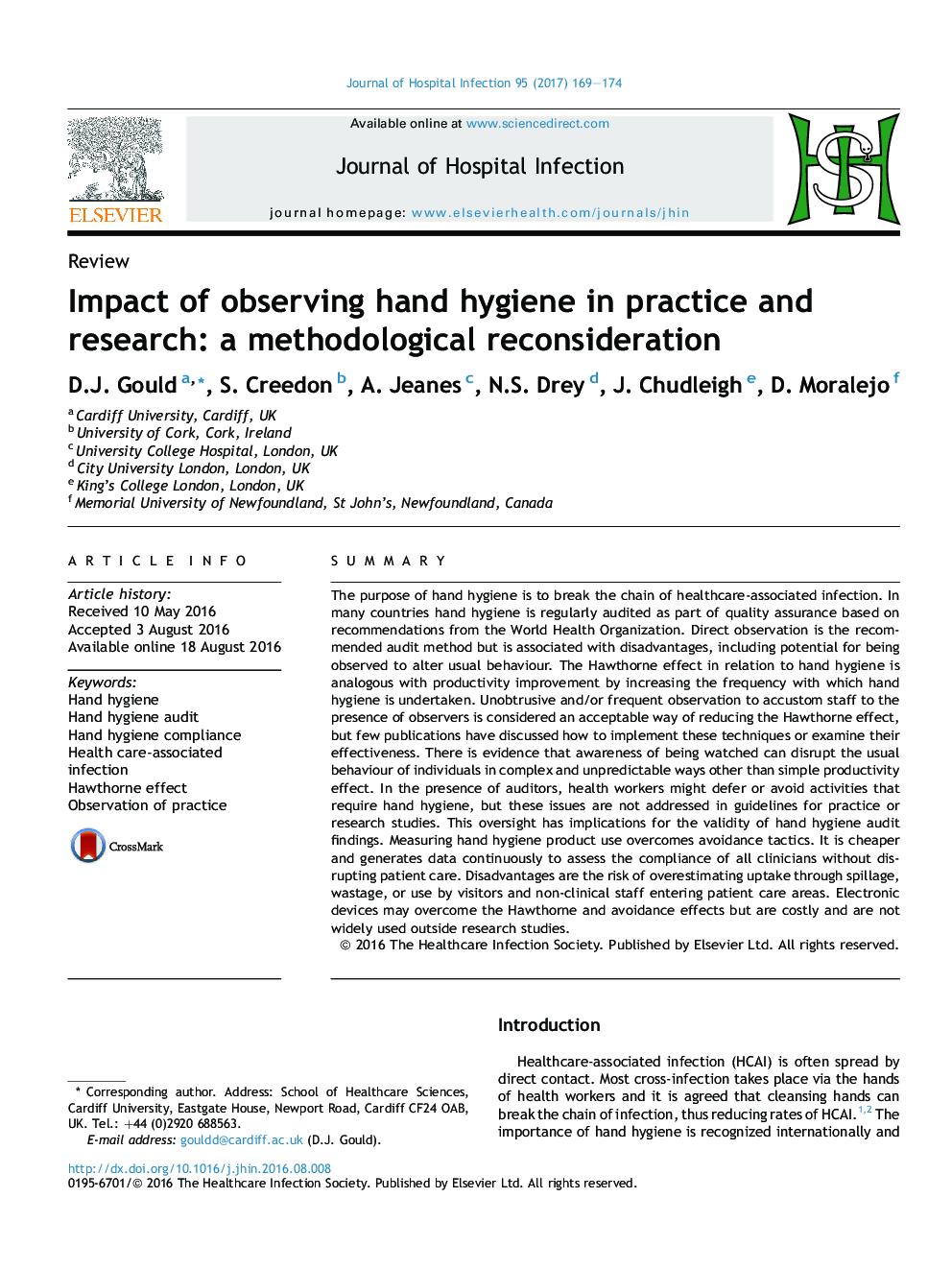| Article ID | Journal | Published Year | Pages | File Type |
|---|---|---|---|---|
| 5668393 | Journal of Hospital Infection | 2017 | 6 Pages |
SummaryThe purpose of hand hygiene is to break the chain of healthcare-associated infection. In many countries hand hygiene is regularly audited as part of quality assurance based on recommendations from the World Health Organization. Direct observation is the recommended audit method but is associated with disadvantages, including potential for being observed to alter usual behaviour. The Hawthorne effect in relation to hand hygiene is analogous with productivity improvement by increasing the frequency with which hand hygiene is undertaken. Unobtrusive and/or frequent observation to accustom staff to the presence of observers is considered an acceptable way of reducing the Hawthorne effect, but few publications have discussed how to implement these techniques or examine their effectiveness. There is evidence that awareness of being watched can disrupt the usual behaviour of individuals in complex and unpredictable ways other than simple productivity effect. In the presence of auditors, health workers might defer or avoid activities that require hand hygiene, but these issues are not addressed in guidelines for practice or research studies. This oversight has implications for the validity of hand hygiene audit findings. Measuring hand hygiene product use overcomes avoidance tactics. It is cheaper and generates data continuously to assess the compliance of all clinicians without disrupting patient care. Disadvantages are the risk of overestimating uptake through spillage, wastage, or use by visitors and non-clinical staff entering patient care areas. Electronic devices may overcome the Hawthorne and avoidance effects but are costly and are not widely used outside research studies.
